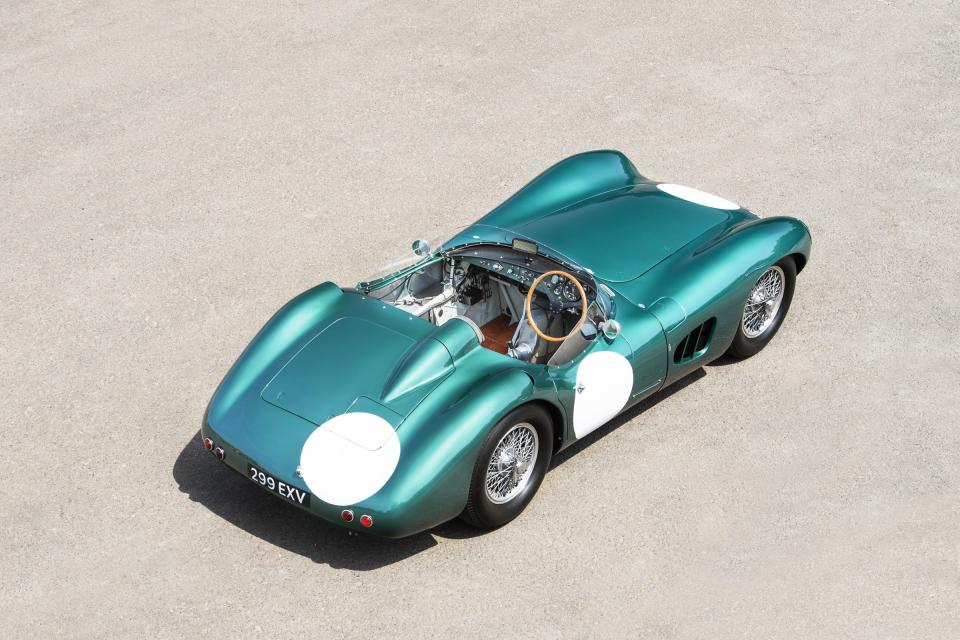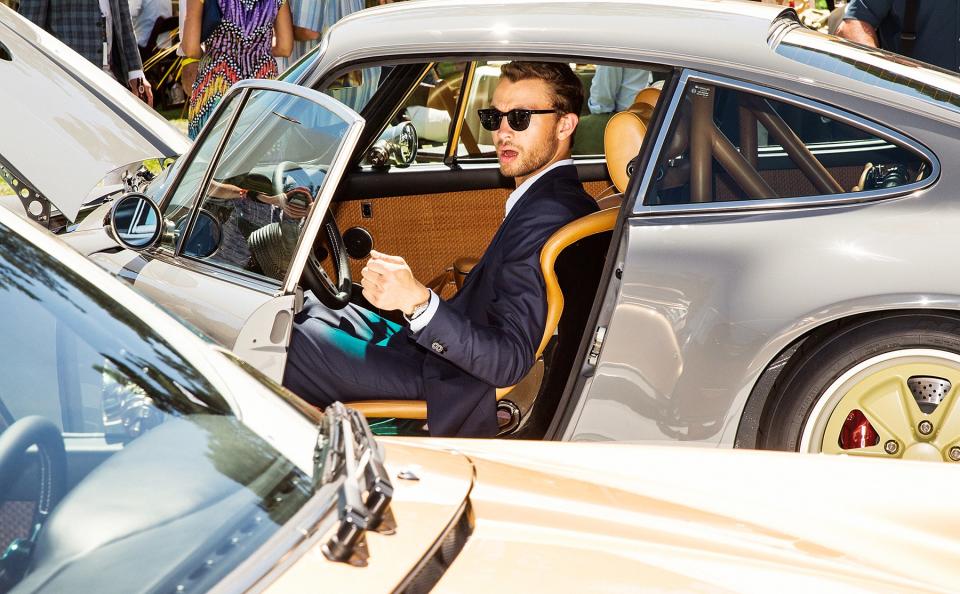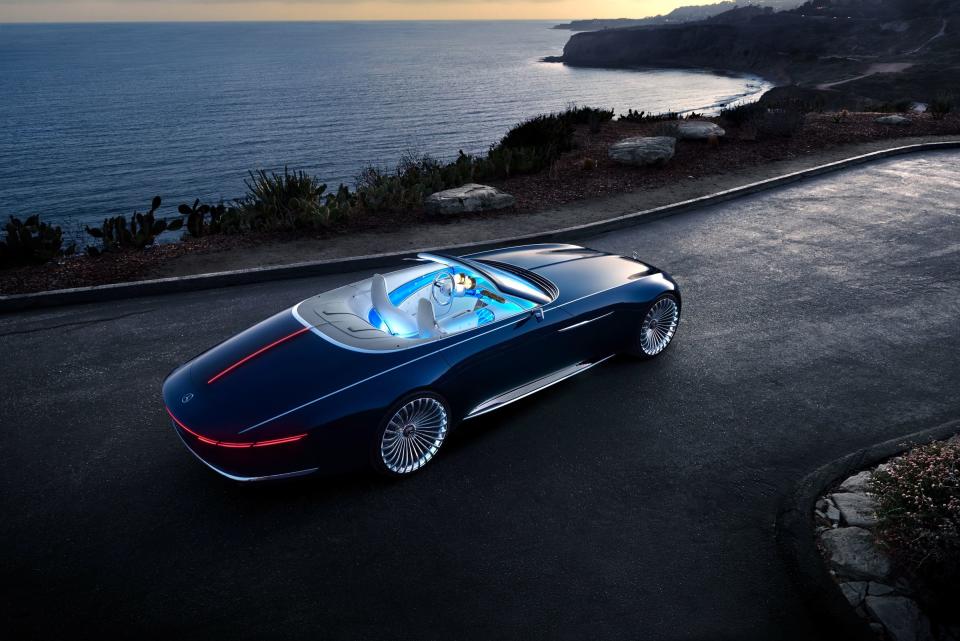Welcome to the Concours d’Lemons, America’s Great Love Fest of Crap Cars
The Trabant trembles. Its puny engine is running at idle, enough to visibly shake the small, boxy, creamy white car, made mostly of cotton waste. Its owner, a tall American guy, stands proudly by his car, encouraging an even taller man to climb inside and see the unexpected roominess of the East German car, made in 1980.
Corky Coker is impressed. “That is a very good example,” he says, “of a very badly built car.” Coker is one of the judges tasked with assessing the field of vehicles through which we're walking, each crappier, or weirder, or both, than the next: Yugos, K-Cars, Pintos, Cosworth Vegas. Rust, vinyl, and faux wood dominate the palette.
Their surprisingly proud owners have gathered on a recent August morning on the lawn of the City Hall in Seaside, California, for the annual Concours d’Lemons. Its organizers describe it as “an ugly oil stain on the Pebble Beach Auto Week,” the time of year when some of the finest automobiles and fanciest folks on the planet come together in neighboring Monterey and Carmel-by-the-Sea for a romp of champagne-soaked, caviar-stuffed excess. The week culminates in the Pebble Beach Concours d’Elegance, where rare Ferraris, ancient Rolls-Royces, curvaceous Bugattis, and the like compete for a best-in-show ribbon that seriously augments the worth of the car on which it's pinned.
The Concours d’Lemons is an antidote to that self-congratulatory decadence. Where the Concours d'Elegance prizes historical accuracy and the "you know it when you see it" quality that is elegance, here the judges look for shabbiness and the also hard to define absurdity. Winning your class or the overall show means a bag of gag gifts, maybe a cheap plaque, and bragging rights of a dubious kind.
It's a celebration of what humans can build when their imaginations run awry, engineering skills falter, and budgets dry up, when ambition gives way to “seems good enough.”
Funky Over Fancy
The ringleader of this circus is Alan Galbraith, a car lover who has attended the Concours d’Elegance for the past 30 years, all the while cracking wise about the lack of crap cans, hoopties, and jalopies. “So one year, I decided to pull the joke,” he says. In 2009, he announced the Concours d’Lemons—a spinoff of the similarly junker-heavy 24 Hours of LeMons race held at circuits around the country—to serve the denizens of the car world who prefer funky to fancy. Galbraith expected a field of 10 cars; 40 showed up. Nearly a decade later, the field has grown to 160, and the lawn is packed with hundreds of attendees.
Coker and his judging partner, Dick McClure, are responsible for rating the Carrozzeria Iacocca category, a class that includes Chryslers, a nod to auto exec Lee Iacocca best known for reviving the automaker’s fortunes in the 1980s. Other categories include Rust Belt American Junk, Needlessly Complex Italian, Der Self-SatisfiedKrauttenWagen, Soul-Sucking Japanese Appliance, Unmitigated Gaul, Rueful Britannia, and Swedish Meatballs.
More From Pebble Beach
Auto Gallery
Every year, some of the best cars in the world change hands at the Pebble Beach Concours d'Elegance.
The Machines of WIRED
For the auto enthusiasts among the one percent, the event calls for an attire we'll call country club excess.
Luxury Cars
The Vision Mercedes-Maybach 6 Cabriolet is all about a future of elegance.
Before the judging begins, Galbraith reminds the contestants that bribes are encouraged, especially alcoholic ones. Coker and McClure walk the field, stopping at each Chrysler to ask the owner a similar set of questions: Where’d the car come from, why did they buy it, what kind of work they did to improve or diminish its value, what mental institution they escaped from. One car gets points for the fishing line used to sew up holes in the vinyl roof, another for the unplugged battery that will hopefully avert any fires.
When Coker and McClure reach a 1965 Chrysler New Yorker, they decline an offer of vodka-loaded "super lemonade" from its owner, Matt Morilo. (It's 9:30 in the morning.) They decide his boat of a car, attached to a ramshackle trailer, deserves to win the Chrysler class. On the condition, that is, that Morilo enter to the winner’s circle wearing the chaps and wielding the lasso hanging on the door of that trailer.
Elsewhere on the lawn, Andreas Wietzke stands with a Coca-Cola-branded Ford Mustang station wagon with a surfboard strapped to its roof. He has no idea why it exists, but he and his girlfriend bought it on eBay to tour California. “They say it’s too nice for the show,” Wietzke, who collects cars in Germany, says, but he still got a place on the lawn. So did the 2006 Zap Electric Microcar, the 1989 Yugo station wagon, and a Ford Edsel that featured in the “The Donna Reed Show.”
Wurst in Show
Where the Concours d’Elegance gets its bloomers twisted over historical accuracy—putting a modern bolt inside a 1920s engine is an easy way to lose points—this show blurs the line between fact and farce. In between crass jokes about altar boys, a mimosa-swilling man dressed as a priest explains his 1976 Ford Pinto works miracles: It has been rear-ended twice without catching fire (an unfortunate weakness of the car’s design). Another contestant labeled his BMW as a Ferrari and topped it with a large plaster hot dog, an on-the-nose bid to win the “wurst in show” award. Every other day of the year, the City Hall's statue of American chemist John D. Roberts is a dignified memorial. Today, it wears a visor with a built-in Guy Fieri wig.
The award ceremony is scheduled for one in the afternoon, but starts more than an hour early. The judges have finished their work, and one of the winners suffered a broken ignition switch while running, so if it’s shut off, Galbraith says, it can’t get going again. Excepting Morilo’s Chrysler—there's no safe way to pilot it and the attached trailer through the crowd-filled winner's circle—each class-winning car gets a turn to drive around the circle as the crowd sprays it with Silly String and Galbraith extolls the car's crumminess.
A golf cart transformed into an enormous snail gets the “WTF???” award. The King Midget, a microcar with a one-cylinder engine from 1958, wins “Slightly Better Than a Go-Kart.” The Cosworth Vega is commended for being “rare, expensive to fix, and worth absolutely nothing.” Each prize is customized for its class: The winner among the Soul-Sucking Japanese Appliances gets soy sauce and a bottle of Miso Easy (a joke on which Galbraith spends more time than necessary); the quaking Trabant takes home boiled potatoes, beets, and cheap vodka.
The much prized “Worst in Show” goes to Randy Carlson’s Civic, with two seats facing opposite directions, two steering wheels, and two engines. He and a friend drive it around the circle a few times, nearly drifting into the crowd as the front and rear wheels disagree on where to go. “I don’t know who built it or why or what they were on,” Carlson says. He got it from the Lane Motor Museum, in exchange for an old electric car whose name he also doesn’t know. Knowledge, historical or otherwise, is not demanded here.
Yet for all the parody, there's no evident disdain for the Concours d’Elegance and its penchant for rewarding wealthy people who pour more cash than creativity into their vehicles. In fact, some of d’Lemons judges will put on straw hats and get serious for d’Elegance the next day, the wedding following the bachelor party, if you will. It all goes to show that high- and low-brow can share the road.





